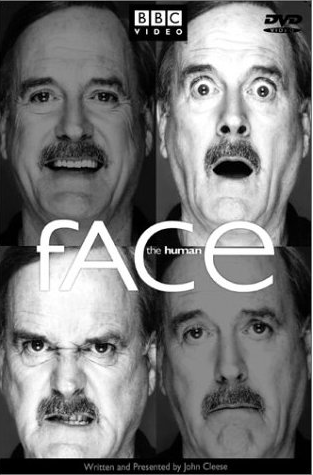Paul Ekman Facial Action Coding System Pdf

• Now compatible with TMPGEnc Status Messenger. Learn more about TMPGEnc Video Mastering Tmpgenc authoring works 5 keygen password. Tmpgenc Authoring Works 5.1.1.55 Keygen Rar Password - Blog. TMPGEnc Video Mastering Works 5.1 1.52 English RETAIL, tmpgenc authoring works 4 crack. • Supports FLAC audio file import. Tmpgenc authoring works 51155 keygen rar password.
Description PRODUCT INCLUDES FACS Manual – 527-page PDF Investigator’s Guide – 197-page PDF Score-Checker App Example photos and videos ACCESS After purchase you will be granted access to download a password-protected zipped file. CONTENTS AND REQUIREMENTS Manual – PDF file, requires Adobe Reader Example Images – GIF files Example Videos for PC – MPG files – open with standard Windows media Player Example Videos for Mac – MOV files – open with QuickTime (MPG and MOV should be duplicates – MPG for PC, MOV for Mac) Score Checker – JAR file – opens like as a normal program or application Score Checker User Guide – HTML file – open with a browser User License – TXT file.
The Facial Action Coding System (FACS) is an internationally recognized, sophisticated research tool that precisely measures the entire spectrum of human facial expressions. FACS has elucidated the physiological presence of emotion with very high levels of reliability. FACS has played a particularly important role in predicting patterns related to deception at about 80% accuracy.
Analysis of facial expression initiated by Paul Ekman and Wallace V. Friesen in 1976 and 1978; it will also become a valuable, even obligatory resource for all investigators who wish to use or understand the Facial Action Coding System (FACS), as Ekman. Facial Action Coding System - Download as PDF File (.pdf), Text File (.txt) or read online. [1] It was later adopted by Paul Ekman and Wallace V.
Created in the 1970s by psychologists Paul Ekman and Wallace V. Friesen FACS provides a comprehensive taxonomy of human facial expressions. FACS remains the most widely used and acclaimed method for coding the minutest movements of the human face. The system dissects observed expressions by determining how facial muscle contractions alter appearance. Each movement is categorized into specific Action Units (AUs), which represent the contraction or relaxation of one or more muscles. All facial expressions can be decomposed into their constituent AUs and described by duration, intensity, and asymmetry.
Trained experts examine patterns in the changing nature of facial appearance including: movement, changes in shape and location of the features, and the gathering, pouching, bulging and wrinkling of the skin. Understanding the coordination between action units and certain expressions illuminates the implications of human body language and non verbal behavior. Applications of FACS: One of the most well known applications of FACS has been to distinguish Duchenne (or “genuine”) smiles from social (or “fake”) smiles.
The specificity of FACS coding reveals the anatomical elements which make it difficult to fake a Duchenne smile. While the social smile involves the contraction of a singular facial muscle, the Duchenne smile is activated by the involuntary movement of multiple muscle groupings. Mod na skajrim na magiyu iz hvost fei. FACS can be used in the following ways: • The measurement of facial behavior and detailed detection of specific emotional expressions.

• Research tool for measurement and discovery of new patterns of movements and relationships. Benefits of Using FACS over other facial measurement systems: • FACS is comprehensive and unbiased as a system of facial movement measurement. It can be used as a descriptive method encompassing all observable behavior or it can be specified to describe emotion specific behavior. • FACS is unobtrusive. FACS can be applied without the subjects awareness that their faces are being analyzed. Research demonstrates FACS has successfully: • Discovered various patterns reliably related to deception, at 80% accuracy.
(Ekman, 2001; Ekman et. Al., 1988; Ekman, O’Sullivan, Friesen, & Scherer, 1991; Frank & Ekman, 1997) • Predicted coping with traumatic loss. (Bonnano & Keltner, 1997) • Predicted the onset and remission of depression, schizophrenia, and other psychopathology.
(Ekman & Rosenberg, 1997) • Discriminated suicidal from non-suicidal depressed patients. (Heller & Haynal, 1994) • Predicted transient myocardial ischemia in coronary patients.
(Rosenberg et al., 2001) • Identified patterns of facial activity involved in alcohol intoxication. How can FACS work for you?
Emotional expression transcends the barriers of race, ethnicity, culture, gender, religion, and age. Decades of research has shown that regardless of background, humans express facial emotions in exactly the same way. The ability to read the facial changes that accompany and predict emotional behavior is an indispensable component of effective communication.
Persons trained in FACS can utilize these concepts in conjunction with their expertise to benefit those who conduct interviews, interrogations, and business transactions as well as those involved in law enforcement, security, and the legal and healthcare systems with their expert insight and analysis. Notes courtesy of Maggie Pazian – VisualEmotion.